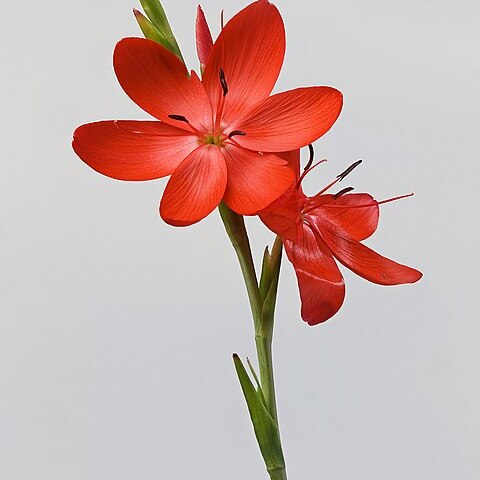Perennial herb, geophyte, 0.20-0.45 m high; rootstock rhizomatous; stem slender, terete. Leaves usually 2 or 3, in basal rosette, linear, erect, glabrous. Bracts green, herbaceous, lanceolate. Inflorescence a 6-8-flowered, lax spike, distichous; flowers deep crimson; perianth tube straight, erect; tepals as long as tube, oblong acute. Stamens with anthers ± 8 mm long, equaling filaments. Flowering time Dec.-Apr. Capsule sessile, obtuse.
Rhizomatous geophyte, up to 0.75 m high; sometimes with axillary cormlets. Leaves with blade linear, grass-like, with a distinct midrib. Flowers: 6-8, ± 65 mm in diameter, arranged in a lax, distichous spike; filaments 6-12 mm long; anthers 3-9 mm long, yellow to whitish; perianth with segments pink or red; Nov.-Apr.
Perennial herb, up to 0.75 m high. Rhizomatous. Leaves linear, grasslike, furnished with a distinct midrib. Flowers 6-8, arranged in a lax distichous spike; bright pinkish red.
Pending.

